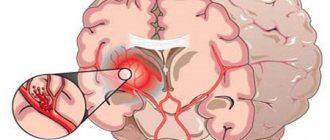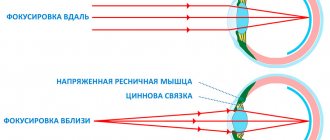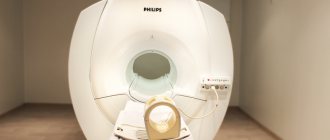March 29, 2018
Neurology is a branch of medicine that deals with the study of diseases of the central and peripheral nervous system. It is very closely related to other areas, namely psychiatry, anatomy, neurogenetics and others. Some people mistakenly call neurology any disease of the nervous system in humans. But it is still worth remembering that this is a direction in medicine, and not a specific ailment.
According to statistics, neurological diseases occupy one of the first places in the world in terms of prevalence. They can arise and actively develop at any age, and sometimes even in the womb. In such cases, we are talking about congenital pathology. An unhealthy lifestyle, injuries and severe stress can also cause the development of diseases. Taking into account the modern rhythm of life, the first signs of illness can appear even in young and, at first glance, absolutely healthy people.
Neurological diseases
The most common ailments are:
- Migraine . It is difficult to imagine a person who has never had a headache in his life. Some people don’t even consider it a disease - just temporary discomfort. One tablet and the problem is solved in literally 15–20 minutes. But there are people whose headaches appear frequently and last a long time, and miracle pills do not help. You cannot do without consulting a neurologist.
- Insomnia . This disease is more severe than the first, although most people do not take it seriously. Keeping sleeping pills on hand at all times is not the best way out of the situation. Without taking action in time and without undergoing a course of treatment, a person risks getting epilepsy, arthritis, stroke and other diseases of the nervous system.
- Epilepsy . Doctors still cannot fully determine all the reasons why it occurs. At the same time, genetic predisposition has not been proven: some patients have relatives suffering from epilepsy, but the relatives of others know about this disease only by hearsay. The cause of the disease can be a tumor, head injury, impaired blood supply to the brain, and even viruses. Epilepsy is accompanied by convulsive seizures. What is noteworthy is that the patient does not remember at all what happened to him during the seizure. Therefore, relatives must be nearby during an attack so that the patient does not harm himself.
- Stroke . A common disease among older people. Prompt assistance during an attack is fundamental to the patient’s continued well-being. A stroke is a consequence of impaired blood circulation in the brain. The blockage of the artery occurs gradually, and the attack itself is the result of hemorrhage in vulnerable places. The likelihood of a stroke is very high if the patient suffers from diabetes, arrhythmia, pressure changes, or is overweight. The disease can be identified by appearance, speech and coordination of movements. On one side of the body, muscles fail, so a crooked smile is often observed, and a person cannot raise his arms to the same level.
- Multiple sclerosis . One of the most dangerous diseases. The myelin endings of the nerves are destroyed and plaques form in their place. They interfere with the normal flow of impulses from the brain to other organs. Timely diagnosis and proper treatment can slow down and stop the development of the disease, even for several years.
- Alzheimer's disease. A severe neurological disease characterized by memory loss in the patient. A person cannot remember what he did literally half an hour ago, simple words, and even forget who he is and where he lives.
For any neurological disease, it is important to “sound the alarm” as early as possible and consult a doctor. When the first signs appear, you should definitely conduct the necessary research.
Methods of treatment and rehabilitation at the Neurology Center of the Russian State Scientific Center
The Department of Neurology admits patients with various pathologies of the central and peripheral nervous system. To determine the nature and causes of disorders, advanced methods of examining the body are used:
- computed tomography of the brain;
- duplex scanning of brachiocephalic vessels;
- stimulation electroneuromyography and needle myography;
- laboratory research.
Neurology in children
A difficult area in medicine that requires maximum care and highly qualified specialists. Neurology in children differs significantly from diseases in adults. The thing is that at a very young age the disease develops differently and is accompanied by unexpected symptoms and signs, which sometimes cannot even indicate its presence.
Neurological diseases in children can result from:
- injuries after difficult childbirth;
- unhealthy lifestyle of a pregnant woman (smoking, drug use, alcohol);
- hypoxia in the womb;
- predisposition - if the parents have genes for the disease;
- infections;
- the special location of the fetus in the womb (this often includes the entwining of the umbilical cord around the baby’s neck).
Although neurological diseases in children can appear at any age, most of them can be detected at the earliest stages and even during pregnancy. Early diagnosis allows you to start a course of treatment on time, which increases the chances of a full recovery and further normal development.
It is for this reason that young parents are strongly advised to show their child to the pediatrician regularly. In case of minimal deviations, he will refer you for examination to a neurologist and other specialists.
Causes of nervous system diseases and their symptoms
What can be the impetus for the appearance and development of diseases? A number of reasons include:
- constant stress and tension;
- feeling of emotional emptiness and discomfort;
- sleep disturbance, lack of sleep;
- lack of activity;
- sedentary lifestyle;
- consequences of previous infectious diseases and head trauma;
- unbalanced diet;
- alcohol abuse;
- lack of vitamins, minerals and other beneficial substances in the body;
- drug use.
Elderly people are most susceptible to neurological diseases due to the increased likelihood of accelerating degenerative processes. However, in recent decades, diseases have become “younger”, affecting people of middle age and younger.
What symptoms of the disease should alert you? This:
- Headaches of various types. They can be compressive or occur suddenly and spontaneously. In the first case, it seems that the head is compressed by a hoop. The second attack is preceded by a flash, the patient is irritated by loud sounds, light and other factors. Sometimes your head hurts so much that you can’t stand or sit, much less work or play sports.
- Dizziness. A person loses a sense of balance when walking, and may even lose consciousness. This is often caused by damage to the vestibular apparatus or disruption of blood flow through the arteries of the spine. Dizziness can result from a sharp turn of the head in any direction.
- Speech, writing, reading disorders. The patient has difficulty pronouncing even ordinary words, not understanding the speech, despite the fact that he hears it. Difficulties may arise with the names of the most common objects and recognition of loved ones and relatives.
- Movement violation . May manifest as weakness of the limbs or even involuntary actions. These phenomena are called paralysis. This also includes increased muscle tone, spasms, tremors and convulsions. The level of damage and methods of treatment can only be determined by a doctor.
- Visual impairment. If the patient does not have eye diseases, then decreased acuity and narrowing of the field are a characteristic symptom of neurological ailments. In this case, the examination is carried out together with an ophthalmologist.
- Sensory impairment . A person does not feel cold, warmth or even pain. There may be no sensitivity either in a certain area of the body or in the entire limbs.
- Hearing loss. Ringing and tinnitus are often a symptom of neurological diseases. Typically accompanied by headache or dizziness. The patient should also be wary of hyperacusis - a sharp increase in hearing, which leads to irritability with sounds.
Panic attacks, a lump in the throat and excessive tearfulness are also symptoms of diseases of the nervous system. It is worth coming to see a doctor even if one of them is identified. Early diagnosis and identification of the problem is the key to successful treatment and quick recovery.
The following disorders are successfully treated in the hospital:
- cerebrovascular diseases, consequences of stroke;
- Parkinson's disease and other extrapyramidal disorders (dystonia, tremor, etc.);
- cognitive disorders (memory disorders, attention), including Alzheimer's disease and other types of dementia (diffuse Lewy body disease, frontotemporal dementia, etc.);
- diseases of the peripheral nervous system (mono- and polyneuropathy);
- acute and chronic pain syndromes (including spinal osteochondrosis, herniated intervertebral discs, postherpetic neuralgia, trigeminal neuralgia);
- headaches, dizziness;
- demyelinating diseases of the nervous system;
- psychosomatic disorders, neuroses.
If necessary, therapists, endocrinologists, cardiologists, psychologists and other specialists participate in diagnostic and treatment measures. A multidisciplinary approach allows you to collect maximum information about the patient’s health status, speed up his treatment and rehabilitation.
The department's doctors are proficient in the methods of classical neurological examination and treatment, as well as additional methods of functional diagnostics (EEG, ENMG, EMG), neuropsychological testing, therapeutic drug blockades, kinesiotaping, botulinum therapy, and regularly attend medical conferences in Russia and abroad.
The center is located in Moscow at the address: 1st Leonova Street, building 16. To clarify prices for services and make an appointment, call the phone numbers listed on the website or use the online form.
Diagnostics
Conventionally, all methods for identifying neurological diseases can be divided into manual, instrumental and laboratory.
In the first case, the examination is carried out by a doctor in the office using a special hammer. He tests the patient's sensitivity in various ways. If this method is not enough or the problem is serious, the specialist will prescribe additional studies.
Instrumental diagnostics are carried out using electric wave, radiation or ultrasound equipment.
Electrical ones include:
- EEG (electroencephalography) is a painless procedure that will help diagnose epilepsy, panic attacks and migraines. With the help of such equipment, it is possible to detect brain damage due to trauma and concussion.
- Electroneuromyography. It involves recording the electrical activity of muscles and the functioning of the central nervous system. Allows you to identify myotonia, dystonia, stages of development of sclerosis and other similar ailments.
All procedures must be carried out by experienced specialists who are able to identify signs of the disease during diagnosis.
Radiation methods include X-ray, computer, magnetic resonance and nuclear magnetic tomography. They can identify tumors and neoplasms, cysts and traumatic brain injuries. An image of the area being examined is displayed on the screen. The picture can be enlarged or reduced to assess the threat or search for it. Functional methods include those radio wave studies, during which you can see the organ in dynamics.
In modern neurology, ultrasound examinations also help to diagnose diseases: Dopplerography and echocardiography.
What symptoms should you consult a neurologist for?
Signs of possible diseases are divided into motor and sensory.
Motor manifestations include:
- feeling of weakness in the muscles;
- periodic muscle twitching;
- complete lack of movement - paralysis;
- reduced range of motion in the limbs.
Sensory disorders have the following symptoms:
- pain;
- numbness;
- tingling sensation;
- decreased sensitivity;
- lack of response to pain, mechanical and temperature influences;
- increased sensitivity.
Also, neurological diseases are accompanied by general symptoms - weakness, sleep disturbances, symptoms from other systems. If you are concerned about at least one such phenomenon, we advise you to visit a specialist doctor as soon as possible.
How to stay healthy
The main reason for the appearance of diseases of this type is disruption of the nervous system. If they have not been a pathology since childhood, then their occurrence can be triggered by chronic fatigue, constant stress at work and at home, bad habits, as well as a lack of vitamins in the body. To prevent the development of neurological diseases, you just need to:
- exercise – preferably regularly, and not a couple of months of intense exercise a year in order to “lose weight by summer”;
- rest fully - this means healthy sleep of at least 8 hours a day (at night, not during the day);
- eat right - it is with food that we get all the nutrients the body needs, so watch what’s on your table;
- walk in the fresh air - it doesn’t matter whether you decided to take a walk after work or deliberately went to the park. If the weather permits, and things can wait 15–20 minutes, then why deny yourself the pleasure.
Alcohol and tobacco abuse can also cause neurological diseases. Toxic substances have a destructive effect on the entire body as a whole. Do you smoke? Drop it! The body will thank you with good health and excellent mood. As for alcohol, nothing bad will happen from a glass of good wine with dinner. The main thing is to know when to stop.
Mechanism for using the Site, sections of the Site
6.1.
Registration on the Site User registration on the Site is free, voluntary and is carried out by the User on the Site by filling out the information marked with a red asterisk.
The user of the Site may be an individual at least 18 years of age.
When registering on the Site, the User must provide the following reliable and current information about himself:
- First and last name in Cyrillic and/or Latin;
- Email address (for example);
- Phone number;
- Date of birth;
- Floor;
If desired, the User can indicate the disease he is interested in by checking the box next to it.
To register on the Site, the User must confirm consent to the processing of personal data and read the rules of the Site.
If you wish to receive the Site’s newsletter to the User’s email address specified during registration, the User can check the “Subscribe to portal news” box.
To complete registration, the User must enter the code indicated in the picture.
All fields marked with a red asterisk are required. Without filling out these fields, User registration on the Site cannot be carried out.
After registering on the Site, an email with a link to confirm registration will be sent to the email address specified by the User. To confirm registration, the User must follow this link and thus confirm his registration on the Site. Registration of the User on the Site means the User's full and unconditional acceptance of these Rules in accordance with Article 438 of the Civil Code of the Russian Federation.
The user is responsible for the accuracy, relevance, completeness of the data provided and their compliance with the legislation of the Russian Federation.
6.2. Personal Area
In the personal account, the User can correct his data in the “Profile” tab.
In the “My Stories” tab, the User can share his story by clicking the “Share Story” button. In the future, all stories added by the User will be displayed in this tab.
In the “My Ads” tab, the User can add an ad if he wants to donate medical equipment, or add an ad if he needs medical equipment.
6.3. Home page of the site
On the main page of the Site, the User has access to the following functions and sections of the Site:
- Transition to the portal for healthcare professionals, provided that the User is a healthcare specialist.
- The Healthcare Professionals Portal contains specialized medical and scientific information intended exclusively for healthcare professionals. When going to the portal for healthcare professionals, the User confirms that he is a healthcare specialist and is responsible for the accuracy of this fact.
- Login to the User's personal account.
- Searching for information on the Site.
- Go to any of the following sections of the Site offered in the horizontal menu: “neurological diseases”, “medical institutions”, “legal information”, “mutual assistance”, “materials”, “your stories”.
- Using a hint by clicking on the question mark in the corner of social assistance: “I need help”, “I want to help”.
- When selecting the “I need help” option, the User can go to the following sections of the Site: “Find information”, “Select a medical institution”, “Accept a gift” and “Get the necessary help”.
- When selecting the “I want to help” option, the User can go to the following sections of the Site: “Share a story”, “Post an ad” and “Help Users in need of help”.
- Using a quick search for a medical institution of interest to the User by specifying in the search filter: city, disease, type of institution and going to the “Medical Institutions” section.
- Receive information about upcoming events in the "Events" section. Watching videos posted in the “Materials” section and dedicated to diseases of the central nervous system.
- Obtaining information in the “News” section about the latest events in the field of neurological diseases.
- Receiving information in the “Your Stories” section about articles that other Users posted with their stories.
- Go to the “About the project” section.
- Go to the “Feedback” section.
- Hotline number.
6.4. Neurological diseases
In the “Neurological diseases” section, the User can read articles on various neurological diseases.
Having selected the disease he is interested in, the User goes to the Site page dedicated to this disease. On this page of the Site, all information is available to the User for viewing, except: rehabilitation, videos, brochures and memos. To view information that is not available to the User, the User must register on the Site.
6.5. Treatment and prevention institutions
After registration and authorization of the User on the Site, the User can find in the section “Medical and preventive institutions” the medical and preventive institution of interest to him, using the search and indicating the following information about the medical and preventive institution of interest: city, disease, type of institution.
If, at the User’s request, the Site’s search engine did not find a medical institution, the User can remove the search filter by “disease” by selecting “all diseases”, or remove the search filter by “type of institution” by selecting “all institutions” in the city of interest. If the User specified only a city in the search, the Site’s search engine shows all medical institutions in that city. Medical and preventive institutions of the city will be shown in the form of a list and map. By clicking on any of the medical institutions presented on the map or in the list, the User receives brief information about this institution, namely: the name of the medical institution, telephone number and operating hours of this institution.
6.6. legal information
In the “Legal Information” section, the User sees a list of regulatory legal acts of the Russian Federation relating to patients with neurological diseases. When selecting one of the regulations, this act opens in a new window in PDF file format, which the User can download or print. Among other things, the User can select in the search filter the regulatory legal acts of interest to him by the type of the relevant act: all regulatory legal acts, laws and by-laws.
6.7. Mutual aid
In the “Mutual Aid” section, a registered and authorized User can give or accept as a gift medical equipment and/or care products:
- By selecting the desired tab: “I need help” or “I want to help”;
- When selecting “I need help,” the User sees a list of inventory that other Users are giving away free of charge;
- When selecting “I want to help,” the User sees a list of inventory that other Users need;
- The user can use the filter by page by selecting the heading, category, city of interest;
When selecting the inventory the User is interested in, you can see detailed information: photo of the inventory, its description, contacts for contacting the person who submitted the ad.
If the user is not authorized, then on the inventory page the contact information “Phone” and “Email” are not displayed (if such were specified when submitting the ad), and in their place the button “For registered users” is displayed. When you click on the “For registered users” button, a pop-up with an authorization form opens.
To contact the User who created the ad, you must use the contact information that was provided. Communication occurs directly by email or phone number, without an intermediary.
The User can also add his own ad to donate or receive medical equipment and/or care products. To do this, you need to click on the “Submit an ad” button. The user is taken to a separate page where he needs to provide the following data:
- “I want to help” or “I need help”;
- Heading – indicate the name of the medical equipment or care product (for example, I will give away a walker or I need diapers for adults);
- Category – indicate which of the presented categories medical equipment or care products belong to (for example, a walker is a medical equipment, an orthopedic pillow is an equipment for the home);
- City – indicate in which city you are looking for or want to donate medical equipment or care products;
- Category - indicate which disease the medical equipment or care products you want to give or receive relate to;
- Description text – here you can provide detailed information regarding the medical equipment or care product you want to receive or give away;
- Attach a file – you must add a photo of the medical equipment or care product that you want to donate. If you have a photo of the proposed medical equipment that you want to receive, then you can also add a photo. Photo requirements: the total weight of the photo should not exceed 512 MB, the format of the uploaded photo (photos) is png, gif, jpg, jpeg., The user can attach more than one photo to the ad;
- Phone number – the one that was specified during registration is automatically indicated. If you need to change it, you can do it in this field, but it will not change automatically in your personal account. In your personal account, you can correct it by going to “Personal Account”;
- Click the “Save” button. Next, the User will see that his message has been sent to the moderator and, after approval, will be published. The user can track the status of verification by the moderator in his personal account in the “My ads” section.
The User is personally responsible for any information, files, photographs, links, videos and any other data that he uploads or otherwise makes available to the public (publishes) on the Site or through it. The User does not have the right to upload, transmit or publish information, files, photographs, links, videos and any other data on the Site if he does not have the appropriate rights to perform such actions, acquired or transferred to him in accordance with the legislation of the Russian Federation. In turn, the site administration is not responsible for the information posted by the User on the portal.
After the ad is approved by the moderator, the User receives a notification to the email address specified during registration with confirmation of publication.
If a publication is rejected by the moderator, the user receives a notification of rejection.
If a user edits a previously published ad (which has been moderated), the ad is removed from publication until it is re-moderated.
Removing an ad is done through your personal account in the “My Ads” section.
The advertisement period is 3 months. After the specified period, the advertisement is removed from publication.
6.8. Materials
In the “Materials” section, any User can view: videos, articles, a list of useful books on the category of interest to him.
6.9. Your stories
In the “Your Stories” section, the User can read examples from the lives of other people who have coped with neurological diseases. In this section, the User can find a story on a topic that interests him and share his story related to neurological diseases.
To add your story to the Site, the User must:
- Click on the “Share story” button;
- Select the disease on the topic of which the User would like to publish a story on the Site;
- Specify the title of the User's story;
- In the “Article Text” field, write the User’s story that he would like to place on the Site;
- If desired, the User can add photos to the story; Click the “Save” button. After checking the story by a moderator, the story will be added to the Site.
The user can track the status of verification by the moderator in his personal account in the “My Stories” section.
The User is personally responsible for any information, files, photographs, links, videos and any other data that he uploads or otherwise makes available to the public (publishes) on the Site or through it. The User does not have the right to upload, transmit or publish information, files, photographs, links, videos and any other data on the Site if he does not have the appropriate rights to perform such actions, acquired or transferred to him in accordance with the legislation of the Russian Federation.
The User hereby confirms the transfer to the owner of the Site, and the latter accepts exclusive rights to use for an unlimited period of time throughout the world all stories received from Users without paying any remuneration.
6.9. about the project
In the “About the Project” section, the User can familiarize themselves with the project’s mission. And also with upcoming events, which are displayed in the “Events” block. The data in the “Events” block is derived from the “Events” section
6.10. Events
In the “Events” section, the User can get acquainted with upcoming events in the field of neurology. To find out more about an event of interest, you need to click on it.
When selecting the “Archive” section, the User will be able to view past events.
If there are more than 10 events, then page navigation is displayed under the list of events.
6.11. News
In the “News” section, the User can familiarize themselves with news in the field of neurology and can read in more detail the news of interest by clicking on the desired one. By clicking on the “Show more” button the User will see more news for past dates
6.12. Search
By entering a word or phrase of interest that was previously found on the Site into the text line and pressing Enter, the User will see a list of articles and sections in which this word or phrase appears
6.13. Feedback
In the “Feedback” section, the User can leave a message to the moderator, indicating the following reliable and current information about himself:
- First and last name;
- E-mail address;
- contact phone number for feedback;
- The message itself is for the Site moderator.
To send a message to the moderator, the User must enter the code from the picture and click the “Send” button.









